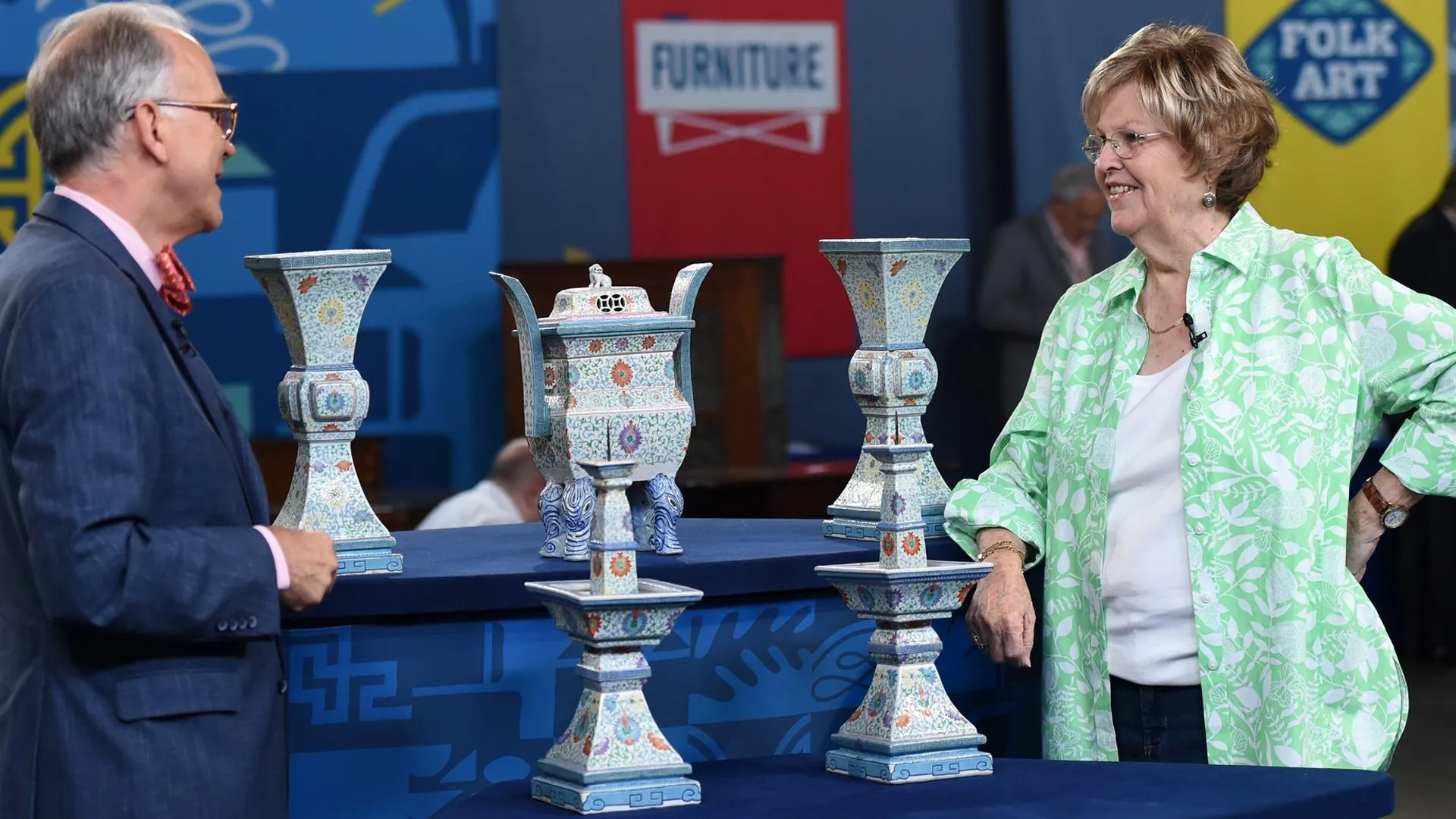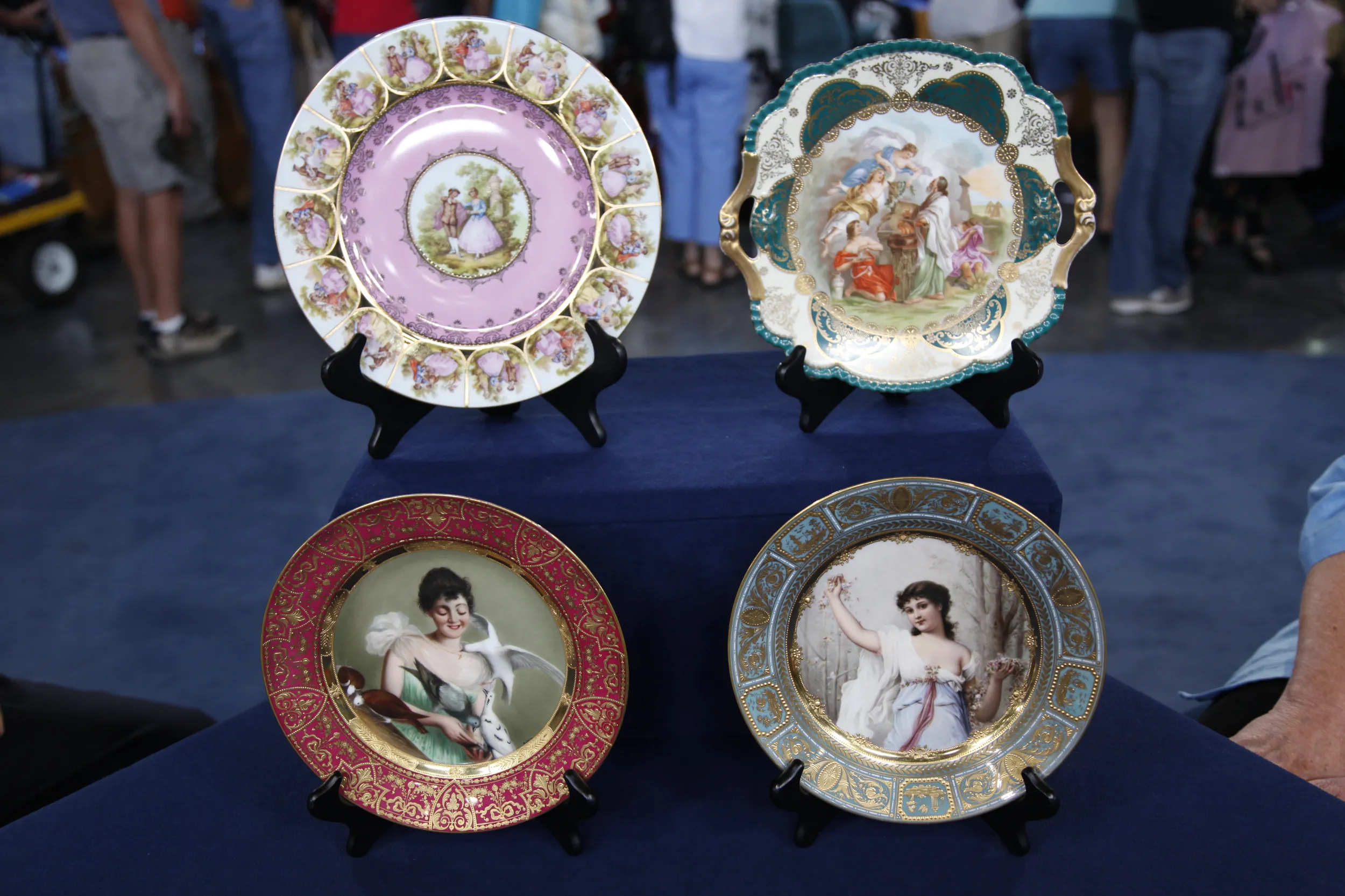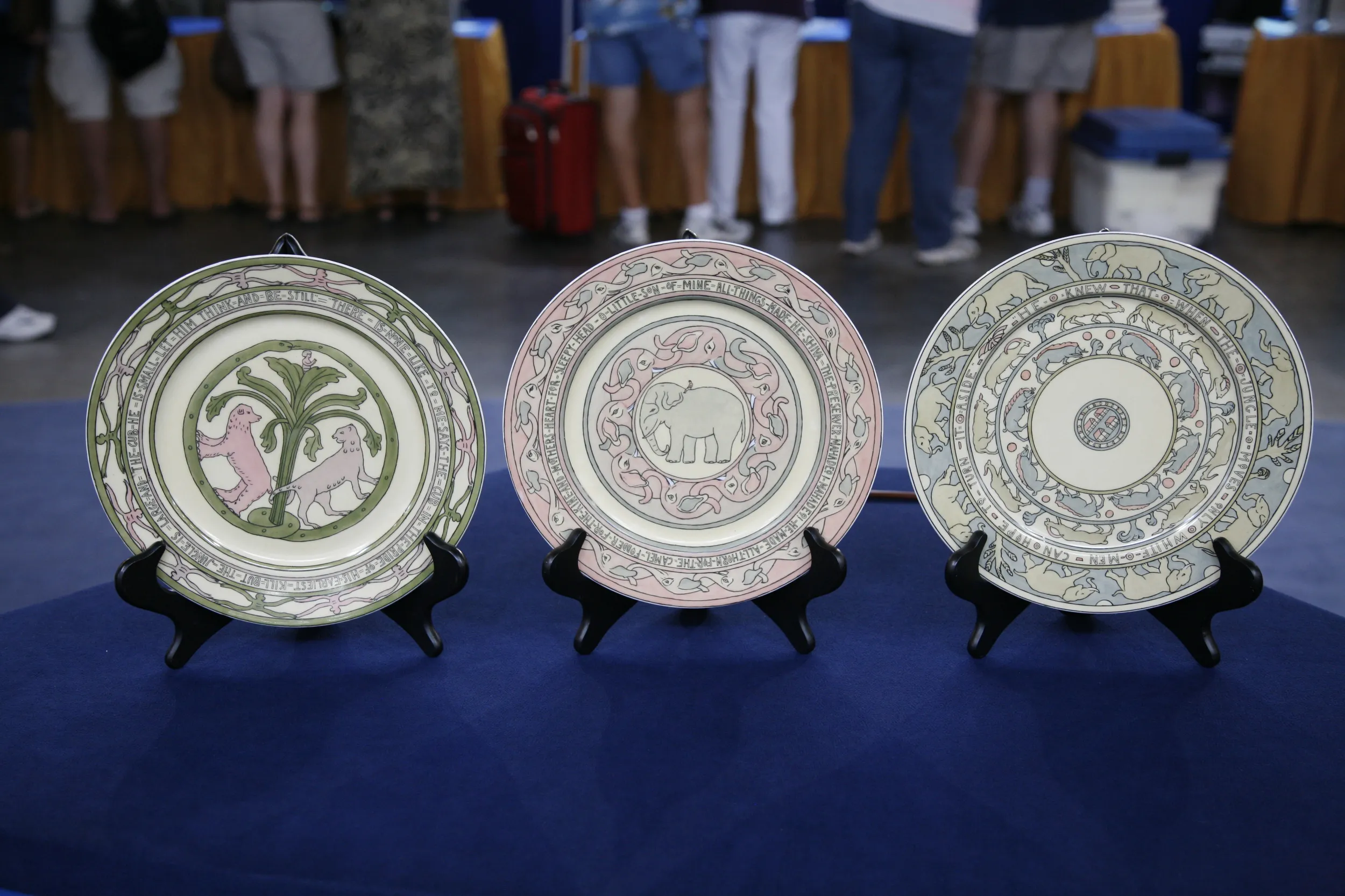GUEST: Well, I got this from my mother's estate. Her uncle was actually a foreign auditor in Berlin, and when the Nazis were coming to power, they fled Berlin and came back to the United States, and they gave it to her as a teenager.
APPRAISER: Now, are these all the pieces you have?
GUEST: No, there are 24 plates.
APPRAISER: They all have a different fish on them. We've got two of the gravy boats and this platter. If we look on the back, it was made in Limoges, France. Limoges is a region of France; it's not the name of a specific manufacturer. It also has the name of Zimmerman in Reslau. That is the name of the retailer where it was bought new. These date to right around 1900, and this was right at the period of popularity of fish sets. It was a huge fad. Fish sets are not popular. Collectors do not like them very much. If they're really gorgeous like this, they will display them. Most fish sets sell for very little money. But this is a little bit of an exception. This plate would sell for about $100, which is about double, triple, or quadruple what most fish plates would sell for. The sauce boat might sell for between $100 and $200, and the platter would sell for between $500 and $700.
GUEST: I see.
APPRAISER: However, you've got a big set. There is an enhanced value for a complete set versus the individual pieces. So for your large set, a retail price would be somewhere between $3,000 and $4,000, which is more than the sum of the parts. This is actually one of the best sets I've ever seen.
GUEST: Good, thank you.








